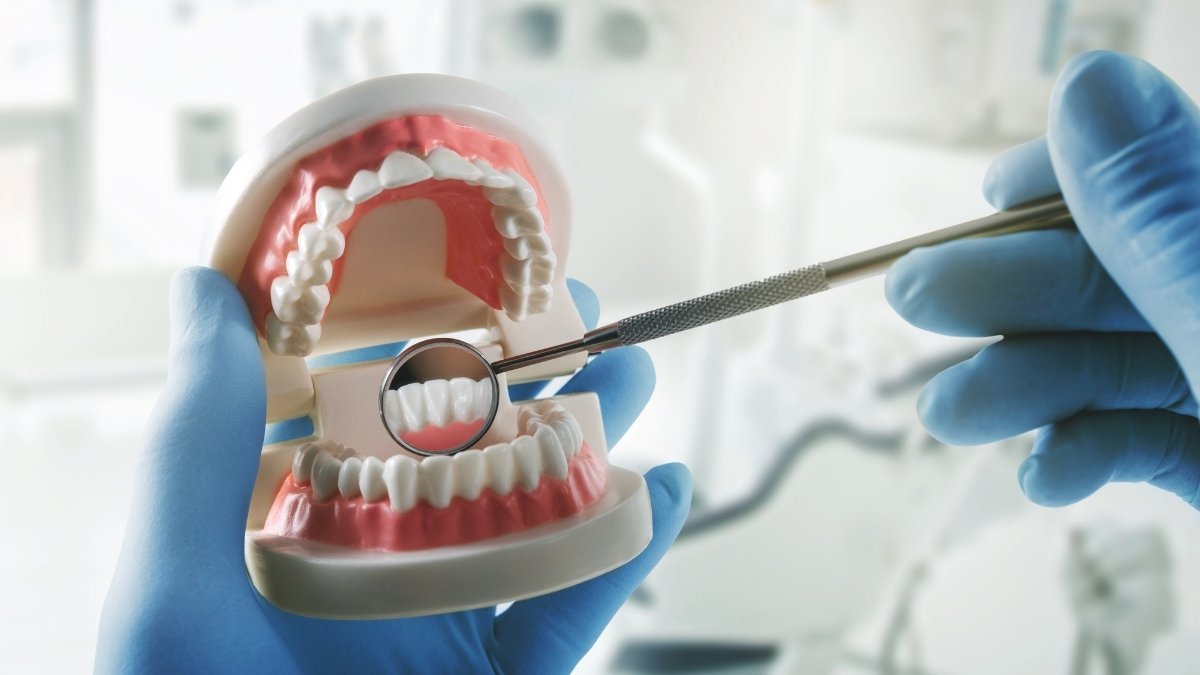
You’re standing over the sink, you’ve just finished brushing your teeth, and you spit. And there it is. A little tinge of pink.
It’s so easy to ignore. We tell ourselves we just brushed a little too hard, or that our gums are just a bit sensitive today. We rinse and walk away. But what if that little splash of color is more than just a minor annoyance? What if it’s a quiet alarm bell, a warning sign from your body about something much, much bigger?
For the longest time, we’ve treated the mouth like it was Las Vegas—what happened in the mouth, stayed in the mouth. It was all about cavities, cleanings, and maybe a little whitening. Your doctor worried about your heart, your dentist worried about your teeth, and never the twain shall meet.
Well, it turns out we were dead wrong.
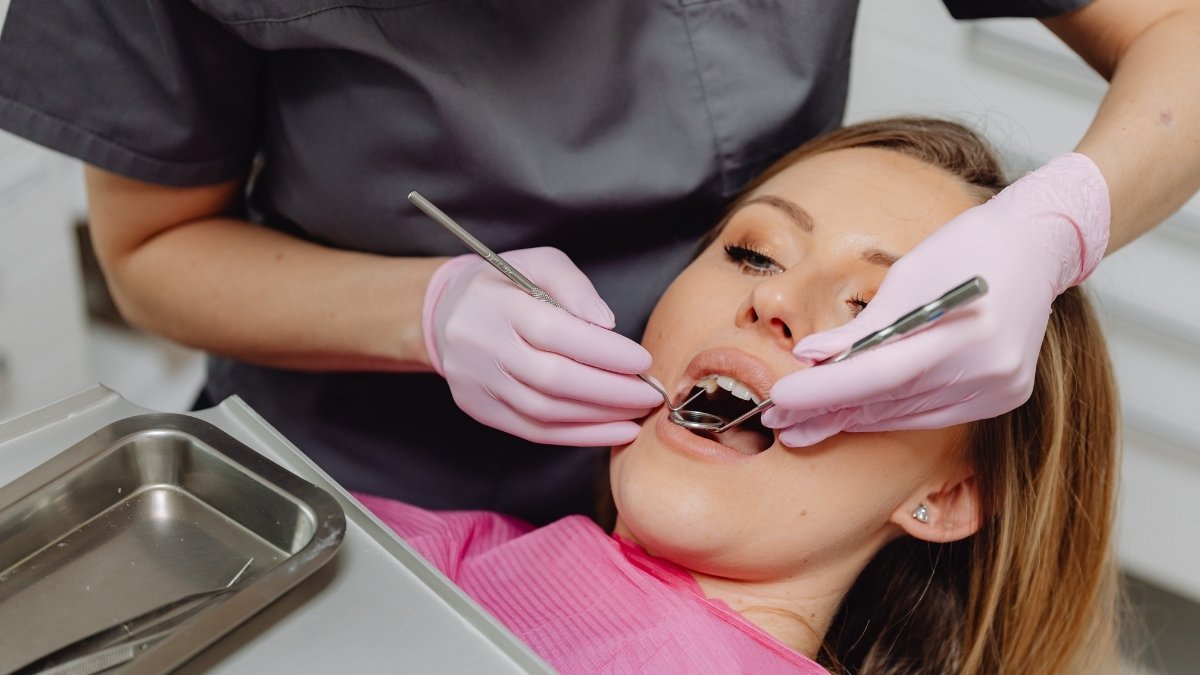
A mountain of scientific evidence now shows that your oral health isn’t just about your smile. It’s a direct, powerful, and frankly, undeniable window into the health of your entire body, especially your heart. The road to a healthy heart, it seems, runs straight through your gums. And understanding this connection—this “oral-systemic highway”—might be one of the most important things you can do for your long-term health.
The problem is, the trigger for all this is incredibly common. We’re talking about gum disease, or periodontitis. And the numbers are kind of staggering. According to the National Institute of Dental and Craniofacial Research (NIDCR), a whopping 42.2% of American adults over 30 have some form of it. That’s nearly half of us. And it gets worse as we get older, hitting almost 60% of people over 65.
This isn’t just some fringe issue. It’s a massive, often silent, public health crisis hiding in plain sight. The chronic inflammation and bacteria from unhealthy gums don’t just stay put. They can kickstart and fuel dangerous processes all over your body, especially in your arteries and heart.
So, let’s pull back the curtain. We’re going to walk through the science—in simple terms—that connects that pink in the sink to your heart. We’ll look at the hard data, and most importantly, we’ll talk about a simple, powerful 60-second habit that can become your first line of defense in protecting both your smile and your heart.
From a Whisper to a Shout: How We Finally Connected the Dots

Honestly, the idea that a sick mouth could make the rest of your body sick isn’t some new wellness fad. Doctors and scientists have been kicking the idea around since the late 1800s. But for most of the 20th century, it was just a theory, a hunch without the hard data to back it up.
The real turning point came in 2000, with a huge report from the U.S. Surgeon General called Oral Health in America. It was the first time a major health authority officially went on record and said, Hey, there’s a real link here between gum disease and things like heart disease, stroke, and diabetes. The report’s main takeaway was a bombshell that’s still echoing today: “You cannot be healthy without oral health.“ Suddenly, this wasn’t a fringe theory anymore.
After that, the research floodgates opened. In 2012, the American Heart Association (AHA) weighed in. They published a statement saying, yes, there’s definitely an association between gum disease and heart disease. They were careful, though. They pointed out that they couldn’t yet prove that one caused the other. After all, both conditions share a lot of the same risk factors—things like smoking, getting older, and having diabetes—and both are driven by inflammation. So, for a while, some doctors were hesitant to draw a straight line.
But watch how the thinking has evolved. We’ve gone from “maybe there’s a link” to “this is an actionable problem.” Fast forward to early 2024, and the same American Heart Association launched a new initiative called “Healthy Smiles, Healthy Hearts™”. The conversation is no longer just about proving causation; it’s about taking action. They’re now pushing for things like blood pressure screenings to become a routine part of your dental visit. Why? For about 27 million Americans, the dentist is the only healthcare professional they see all year.
This is a huge shift. It means the experts now see the connection as so clinically important that we can’t afford to wait. The story has changed from a passive observation to a proactive strategy. And that makes this topic more urgent and relevant than ever.
The Science of It All: How Trouble in Your Mouth Travels South
So how does this actually work? How can a little gum inflammation cause a five-alarm fire in your cardiovascular system? It really boils down to two main pathways: a bacterial jailbreak and a body-wide inflammatory meltdown.
1. The Bacterial Breach: When Germs Go Rogue
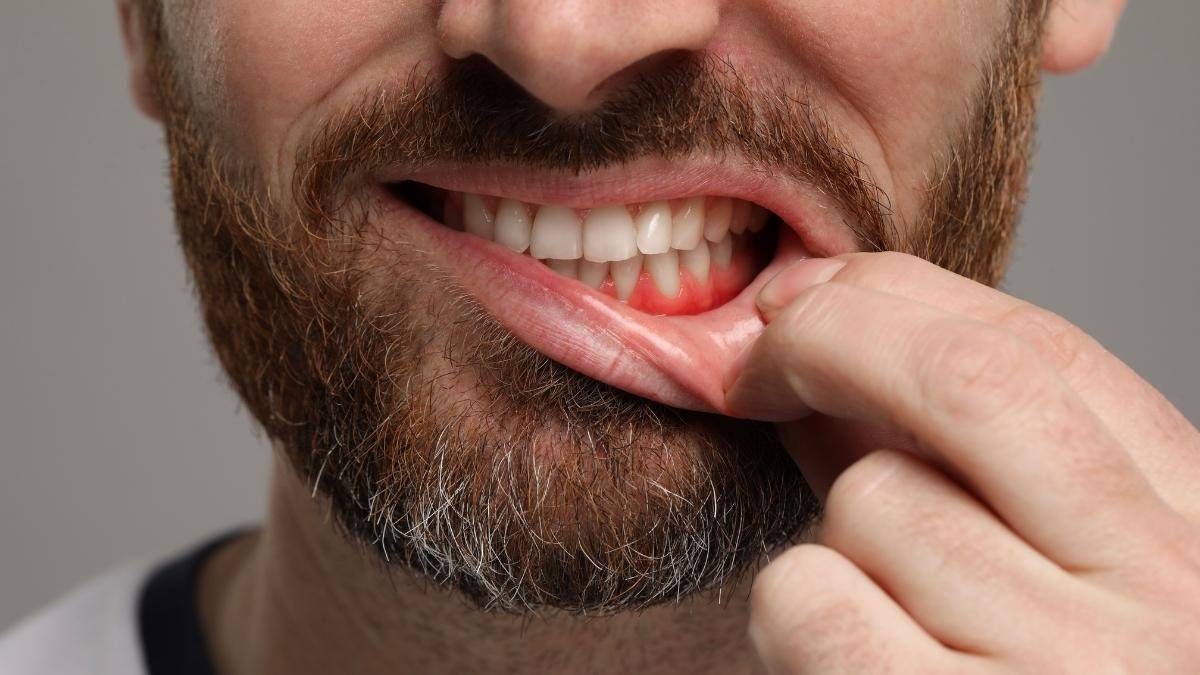
Think of your healthy gums as the bouncers at an exclusive club. They form a tight, protective seal around your teeth, keeping the troublemakers—the hundreds of species of bacteria in your mouth—from getting into the VIP lounge, which is your bloodstream.
But when gum disease kicks in, that security gets lazy. The gums become swollen, inflamed, and leaky. The velvet rope is frayed. This creates a perfect opportunity for harmful bacteria to slip past the barrier and crash the party. This is a condition called bacteremia.
And these aren’t just harmless party crashers. Once they’re in your bloodstream, they can travel anywhere. Scientists have literally found oral bacteria, like Porphyromonas gingivalis, living inside the atherosclerotic plaques in the arteries of people with heart disease. It’s like finding a known arsonist at the scene of a fire—it’s pretty compelling evidence they had something to do with it.
For some people, this bacterial invasion can be catastrophic. The germs can latch onto damaged parts of the heart, especially the heart valves. This can cause a direct, life-threatening infection of the heart’s inner lining called infective endocarditis. This is a clear-cut case of cause and effect, where an infection that started in the mouth leads directly to a cardiac emergency. It’s why surgeons often demand a “dental clearance” letter before they’ll even consider performing heart surgery—they need to know the mouth is clear of any infections that could sabotage the operation.
2. The Body on High Alert: Inflammation’s Silent Damage

While a direct heart infection is terrifying, the more common and sneaky danger is chronic inflammation.
Look, inflammation isn’t inherently bad. It’s your body’s natural response to an injury or infection. It’s the SWAT team rushing in to neutralize a threat. But it’s supposed to be a short-term mission. With untreated gum disease, that SWAT team never goes home. Your immune system is stuck on high alert, 24/7, fighting a never-ending battle in your gums. This creates a low-grade, simmering inflammation that spreads throughout your entire body.
This systemic inflammation is absolute poison for your cardiovascular system. It’s a key driver of atherosclerosis—the hardening and narrowing of your arteries that leads to most heart attacks and strokes. The inflammation damages the delicate lining of your blood vessels, making it easier for cholesterol and other gunk to stick and build up into plaques. Worse, it makes those plaques unstable and more likely to rupture. When a plaque bursts, your body forms a blood clot to fix it. If that clot is big enough, it blocks the artery, and… boom. Heart attack or stroke.
We can actually measure this. There’s a marker in your blood called C-reactive protein (CRP). Your liver produces it in response to inflammation anywhere in the body, and high levels of CRP are a known red flag for heart disease. Study after study shows that people with gum disease have significantly higher levels of CRP. It’s a measurable, physical link.
As Northwestern Medicine Interventional Cardiologist Dr. Jacob Stephen puts it, “Inflammation in your mouth is directly related to inflammation in your heart”. It’s not a metaphor; it’s biology. Cardiologist Dr. David Jacob explains the domino effect: “Inflammation weakens the blood vessels and leads to atherosclerotic conditions… This can lead to coronary artery disease, angina and heart attack”.
3. The Usual Suspects: Shared Risks and Vicious Cycles
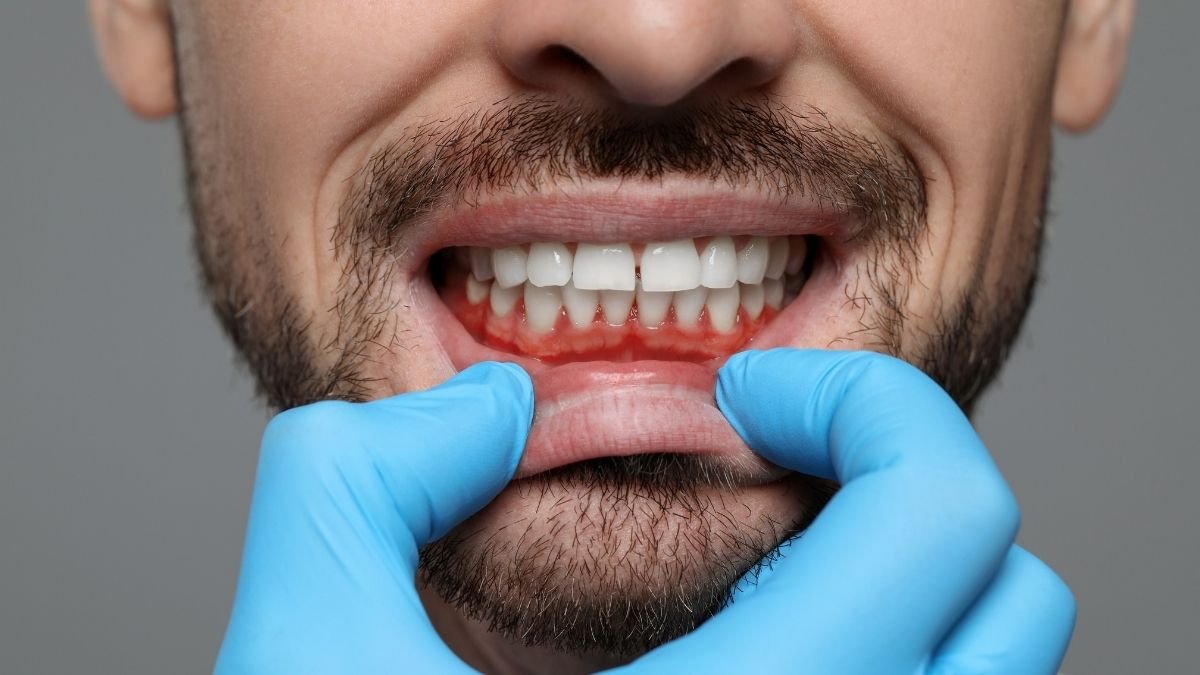
Now, it’s important to be intellectually honest here. It’s not always a simple A-causes-B situation. Gum disease and heart disease are like two partners in crime; they often show up together because they hang out with the same bad influences.
We’re talking about shared risk factors: smoking, diabetes, getting older, chronic stress, and a diet full of sugar. Smoking, for example, is terrible for your gums and terrible for your arteries. It’s a double whammy.
The link between diabetes and gum disease is a perfect example of a vicious cycle. Having diabetes makes you more prone to infections, including gum disease. But having a nasty gum infection can, in turn, make your blood sugar harder to control by fueling that body-wide inflammation. So, the diabetes makes the gums worse, and the bad gums make the diabetes worse, and all the while, your risk for a heart attack is going through the roof.
This is why your oral health is such a powerful clue to your overall health. Think of it as a “canary in the coal mine.” If a dentist sees severe gum disease, it’s a massive red flag that might point to undiagnosed diabetes or other high-risk factors for heart disease. This is exactly why the AHA is pushing for blood pressure checks at the dentist. Your dental check-up is no longer just about your teeth; it’s a vital health screening for your entire body.
The Evidence by the Numbers: This Isn’t Just a Theory

Okay, let’s talk numbers. Because the statistics are what really bring the reality of this situation home.
First, let’s restate the scope of the problem. Gum disease is everywhere.
- 42.2% of U.S. adults over 30 have it.
- It hits men harder (50.2%) than women (35%).
- It skyrockets with age, affecting nearly 60% of adults 65 and older.
- And it’s deeply connected to lifestyle and other health conditions. Current smokers? 62.4% have gum disease. People with diabetes? Nearly 60%.
Now, here’s where it gets really serious. What does having this very common condition actually do to your heart risk?
The landmark PAROKRANK study in Sweden gave us some of the clearest answers. They looked at over 800 people who had just had their first heart attack and compared them to 800 healthy people. The results were chilling. After adjusting for all the other factors like smoking and diabetes, they found that people with periodontitis had a 28% higher risk of having that first heart attack. Other analyses of the same data put that increased risk as high as 49%.
That’s not a small number. And it lines up with what other large-scale studies have found. You’ll often hear the general statistic that people with gum disease are two to three times more likely to have a serious cardiovascular event like a heart attack or stroke. And speaking of stroke, one study found that gum disease makes you three times more likely to have a specific type of stroke that affects vision and balance. In fact, some experts say that the state of your mouth—gum disease, cavities, missing teeth—is as good at predicting heart disease as your cholesterol levels are.
Let that sink in.
Here’s the bottom line, laid out plain and simple:
🚨 Gum Disease & Whole-Body Health: The Critical Connection
Your oral health is a vital indicator of your overall well-being.
Prevalence of Gum Disease (US Adults 30+)
of U.S. adults aged 30+ have gum disease.
7.8% have the severe form.
[Source 1]Increased Risk of First Heart Attack
higher risk of a first heart attack for people with gum disease.
[Source 24]Likelihood of a Major Heart Event
times more likely to have a major heart event if you have gum disease.
[Source 10]The Stroke Connection
times more likely to have certain types of stroke with gum disease.
[Source 27]Prevalence in High-Risk Groups
Prevalence for smokers and people with diabetes.
[Source 1]What this table tells us is that a very, very common condition has a very, very serious impact on your risk for the number one cause of death in the country. This isn’t something we can afford to ignore anymore.
Your 60-Second Shield: A Ridiculously Simple Guide to Fighting Back

Okay, that was a lot of heavy science and scary stats. I get it. The good news? Fighting back doesn’t require some radical, life-altering overhaul. In fact, the most powerful first step you can take is a simple, 60-second habit you can build into your day, starting tonight.
It’s two 30-second actions. That’s it.
Action 1 (30 Seconds): The Old-School Saltwater Rinse

This isn’t some new-age trick; it’s a time-tested, scientifically-backed powerhouse.
- Why it works: Salt is a natural disinfectant and anti-inflammatory. When you swish with warm salt water, you’re doing a few things at once. You’re creating an environment where bad bacteria can’t thrive. You’re gently soothing inflamed, angry gum tissue. And you’re helping to strengthen that “leaky barrier” we talked about earlier.
- How to do it: It couldn’t be simpler. Dissolve half a teaspoon of salt in a cup of warm water. Take a big sip and swish it around your mouth for a full 30 seconds. Really force it between your teeth and along your gums. Then, spit it out. Important: Don’t swallow it. And for the best results, do this before you brush. That way, you don’t wash away all the good fluoride from your toothpaste.
Action 2 (30 Seconds): The Tongue Scrape

This is the step almost everyone skips, and it’s a game-changer.
- Why it works: Your tongue is like a shaggy carpet where bacteria, food bits, and dead cells love to hang out. Brushing your tongue helps, but a tongue scraper is like a deep-clean vacuum. One study showed that a scraper removes 30% more of the gunk that causes bad breath than a toothbrush does. By physically removing that film, you’re drastically cutting down the overall number of bad guys in your mouth, which means fewer of them are available to try and sneak into your bloodstream.
- How to do it: Stand in front of a mirror and stick your tongue out. Place the scraper as far back as you comfortably can and gently pull it forward. You’ll see a layer of white or yellowish gunk come off. Rinse the scraper and repeat 2-3 times. The whole thing takes less than 30 seconds.
Beyond the Minute: The Absolute Non-Negotiables
That 60-second habit is your secret weapon. But it’s an addition to your routine, not a replacement for the fundamentals. Brushing and flossing are still the bedrock of good oral health. Especially flossing.
The Art of Flossing (Yes, You Really Have to Do It)

Let’s be real: flossing is the thing we all lie to our dentist about. But it’s the single most important thing you can do to stop gum disease before it starts, because it cleans the two places a toothbrush can’t reach: between your teeth and just under the gum line.
Here’s how to do it right, because technique matters.
- Get Enough: Don’t be stingy. Pull off about 18 inches of floss. Wrap most of it around one middle finger, and just a little around the other.
- Get a Grip: Pinch a 1- to 2-inch section between your thumbs and index fingers.
- Be Gentle: Gently guide the floss between your teeth. Don’t snap it down on your gums—that just hurts.
- The “C” Shape: This is the magic move. Once you’re at the gum line, curve the floss into a “C” shape against the side of one tooth. This hugs the tooth so you can actually clean it.
- Clean a Little Deeper: Gently slide the floss up and down, making sure you dip slightly below the gum line until you feel a little resistance. This is where the real danger lurks. Do it a few times, then lift the floss over the little triangle of gum and do the same thing to the neighboring tooth.
- Use a Fresh Section: As you move to the next tooth, unroll a clean piece of floss. You don’t want to just move plaque from one spot to another.
And please, if your gums bleed, do not stop. Bleeding is a sign of inflammation. It’s your gums crying out for help. It means you need to be flossing more, just gently. I promise, if you stick with it, the bleeding will stop in a week or two as your gums get healthier.
Brushing: Back to Basics

You know this part, but let’s do a quick refresher on the ADA recommendations:
- Twice a day, for two full minutes. Use your phone’s timer. You’ll be surprised how long two minutes actually is.
- Soft-bristled brush and fluoride toothpaste. Anything harder is just sanding down your enamel.
- Gentle, circular motions. You’re massaging your teeth and gums, not scrubbing a dirty pot.
Need a Little Extra Help? Look Into These Tools
Building these habits is the most important part, but having the right tools can make a huge difference. It can make the whole process easier, more effective, and honestly, a little more enjoyable. If you’re looking to give your routine a boost, here are a few things that can really help.
1. A Solid Electric Toothbrush: Oral-B Pro 1000

A great entry-level electric toothbrush that does the hard work for you. It has a built-in timer to make sure you brush for the full two minutes and a pressure sensor that stops you from brushing too hard—which is key for protecting your gums.
2. A No-Nonsense Tongue Scraper: mastermedi Tongue Scraper

This is the perfect tool for that 30-second tongue scraping habit. It’s made of medical-grade stainless steel, so it’s easy to clean and won’t harbor bacteria. Its U-shape is designed to cover your whole tongue without making you gag, which is a common issue with other scrapers.
3. A Water Flosser for a Deeper Clean: Waterpik Aquarius

If traditional flossing is tough for you because of tight teeth, braces, or sensitive gums, a water flosser is a game-changer. The Aquarius is a classic for a reason. It uses a stream of water to gently clean between your teeth and below the gumline, and with 10 pressure settings, you can find the perfect one for you.
4. Floss for Tight Spaces: Oral-B Glide Pro-Health Floss

For those with tight teeth, finding a floss that doesn’t shred or get stuck is everything. This one is coated in a light wax that lets it slide easily into those tough-to-reach spots without being harsh on your gums.
5. A Gentle but Effective Mouthwash: Crest Pro-Health Advanced

To finish everything off, an alcohol-free mouthwash can help kill any lingering germs without the burn. This one is designed to fight plaque and gingivitis, giving you an extra layer of protection for your gums.
What the Experts Want You to Know
This isn’t just me talking. Doctors and dentists are finally starting to get on the same page about this, viewing oral care as a critical piece of preventive medicine.
Cardiologist Dr. Carl Horton summed it up perfectly: “The danger is that a type of bacteria from the mouth can cause clots and serious problems if it enters the bloodstream… It’s not always the big things that matter, it’s often the little things you do for your health on a consistent basis that makes a great impact“.50 That 60-second habit? That’s one of those little things.
And from the dental side, they’ve known about this for years. That “dental clearance” for heart surgery is the ultimate proof. Dentists are realizing their job isn’t just to fix teeth; it’s to help keep your entire body running smoothly.
Let’s Bust Some Myths, Shall We?

A few stubborn myths about gum disease are still floating around, and they’re actively harmful because they stop people from taking this seriously. Let’s clear them up.
- Myth 1: “A little bleeding from my gums is normal.”
- The Truth: No, no, no. It is absolutely not normal. Think about it: if any other part of your body started bleeding every time you touched it, you’d be at the doctor in a heartbeat. Bleeding gums are the very first sign of gingivitis, the earliest stage of gum disease. It’s a fire alarm. Don’t ignore it.
- Myth 2: “Gum disease is no big deal; it just affects your mouth.”
- The Truth: As we’ve just spent this whole time discussing, this is fundamentally wrong. It’s a serious, chronic inflammatory disease with proven links to the number one killer in the world: heart disease.
- Myth 3: “I don’t have any cavities, so my mouth must be healthy.”
- The Truth: Nope. You can have perfectly strong, cavity-free teeth and still have a raging infection in your gums and the bone underneath. Gum disease is sneaky because it’s often painless in the early stages. That’s why you can’t just rely on how your teeth feel.
- Myth 4: “Only people with bad hygiene get gum disease.”
- The Truth: While poor hygiene is the main cause, it’s not the only one. Your genetics, smoking, stress levels, and even certain medications can make you much more susceptible. It’s not always a matter of just not brushing enough.
Know the Warning Signs: Your Body’s Early Alerts
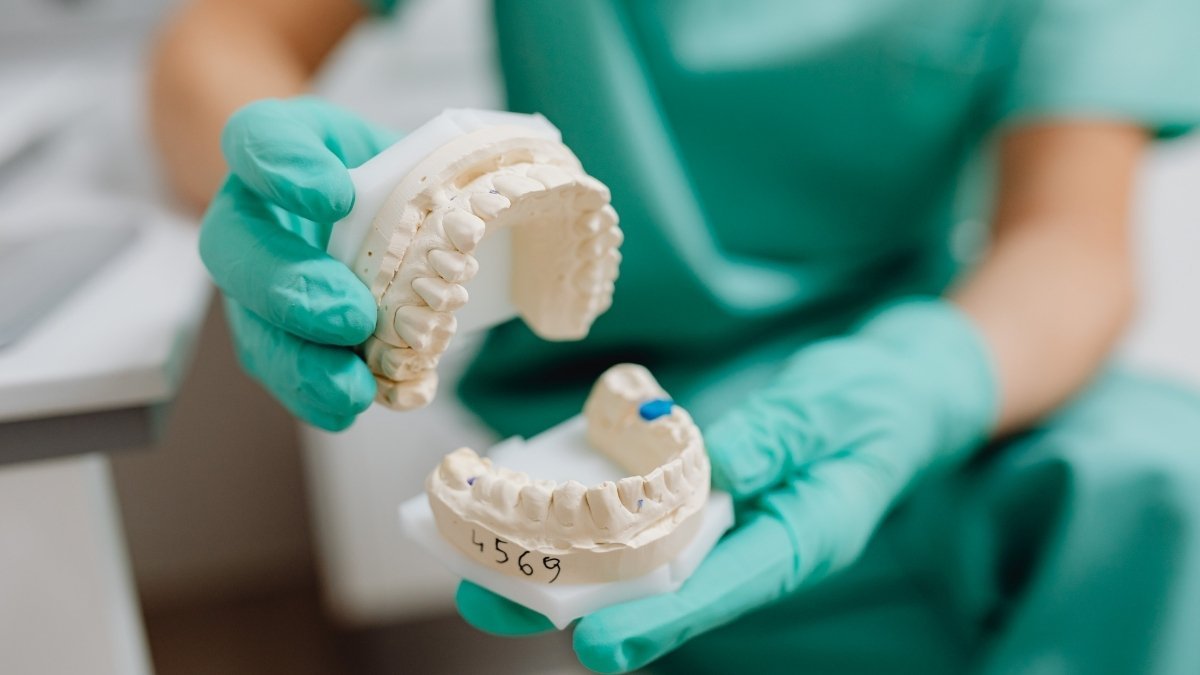
So, how do you know if you’re in the early stages? Your body will tell you if you know what to look for. Be on the lookout for:
- Gums that are red, puffy, or swollen.
- Gums that are tender to the touch.
- Any bleeding when you brush or floss.
- Gums that look like they’re pulling away from your teeth (making your teeth look longer).
- Loose teeth or new gaps appearing between them.
- Persistent bad breath or a bad taste that just won’t go away.
- Pus between your teeth and gums.
If you notice any of these, it’s time to make a dental appointment. Not next month, but now.
The Big Takeaway: Your Smile Is Your Shield
So, what does all this mean? It means we need to fundamentally change how we think about our health.
The science is clear: your oral health and your heart health are not two separate things. They are deeply, physically, and biologically connected. The old wall between dentistry and medicine is crumbling, and that’s a good thing. An unhealthy mouth can be a direct threat to your heart.
But the flip side of that is incredibly empowering. It means that taking care of your mouth is one of the most direct, accessible, and powerful forms of preventive medicine you can practice. That 60-second habit, combined with the non-negotiables of brushing and flossing, isn’t just about preventing cavities anymore. It’s about actively lowering your risk of a heart attack.
Your smile isn’t just a cosmetic feature. It’s a shield. It’s a reflection of your overall wellness.
So here’s the final call to action. Start treating your dental health with the same seriousness you treat your heart health—because the evidence shows they are the same.
Start with that 60-second habit tonight. Schedule your next dental check-up not as a chore, but as a critical health screening. And start a conversation with both your dentist and your doctor about this connection. You are the bridge between your different care providers. You are the CEO of your own health.
Take care of your gums. Your heart will thank you for it.






